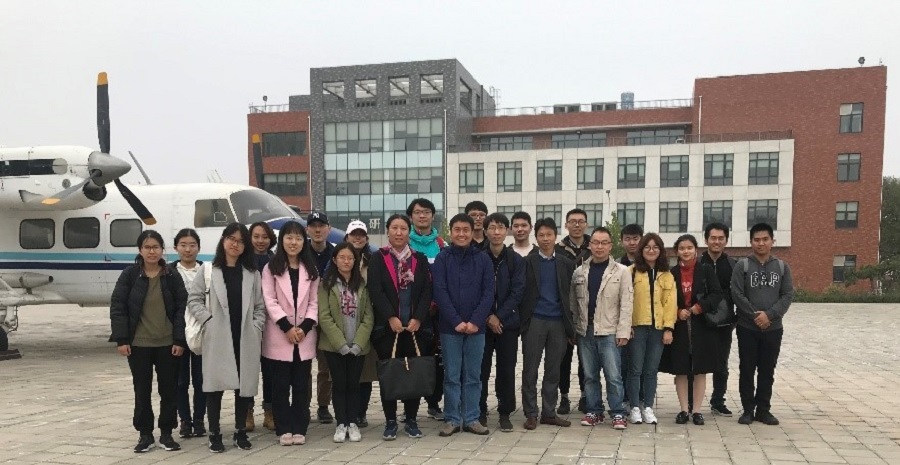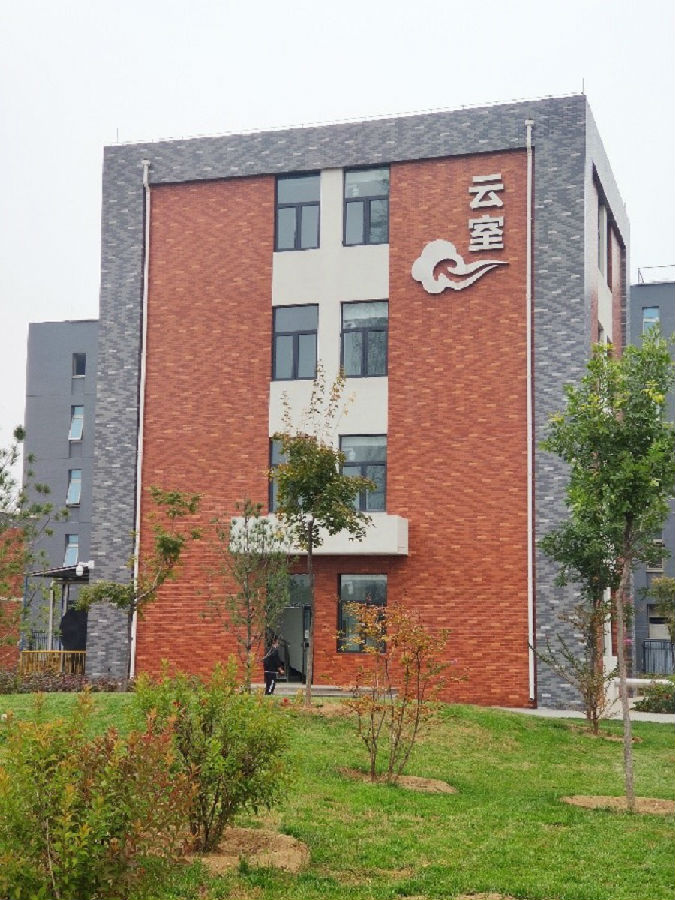On 19 October, as led by Yanluan Lin and Yiran Peng, about 20 students from DESS and its brother departments paid a visit to the Cloud Observation Base of Beijing Meteorological Service in Xinggu Development Zone, Pinggu District. After observing the international state-of-the-art cloud physics test unit and small demo experiments, these students gained a specific knowledge of aerosol and cloud physics, and showed growing interests in the natural phenomena of cloud and precipitation.

Group photo of teachers and students
To start with the activity, a male employee who works in the Observation Base gave a brief introduction of the general operations, observations and research updates of the Base. A full-band observation of clouds and aerosols is generally realized by the Base, making it among the leaders around the world. Besides, the Base also provides artificial weather modification support for major activities to ensure the smooth process. Then he demonstrated a small experiment of supercooled water freezing and hail slices. The instant icing experiment when the supercooled water was mixed into the atmospheric aerosol captured their keen interests, and they began to start hands-on experiments. Next, he brought them to see the aircraft and cannons for artificial weather modification. The cloud condensation nucleus silver iodide catalyst carried by an aircraft, when flied to the cloud, can promote the formation of precipitation, catalyst shells, when thrown to a specific convective cloud zone, would also eliminate the hail. Manually operated cannons are dangerous because injuries were previously caused every year, which in turn made them realize how difficult and hard the artificial weather modification is. It was reported that the Base has upgraded the manually operated cannons to remote control cannons, so operators are protected from getting injured.

Small experiment demonstration
Finally, he introduced the cloud chambers to the teachers and students. The height of the largest cloud chamber in the Base is up to 14m, the whole structure is cylindrical, making it distinctive from other cloud chambers of the same type around the world. The process of cloud formation in nature can be simulated in cloud chamber by changing certain variables, such as interior temperature, humidity, and aerosol concentration. When entering the cloud chamber, they were impressed by the charm of cloud precipitation science.

A cloud chamber in the Base
These students listened carefully what he said during the visit, participated in heated discussion, took hands-on experience, and gained more knowledge of atmospheric aerosols and cloud physics, which in turn aroused their interests for research work.
Submitted: Wang Mingxing
Edited: Fu Meijuan
Reviewed: Wu Haiping